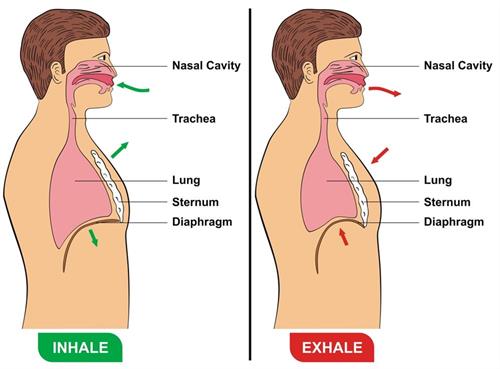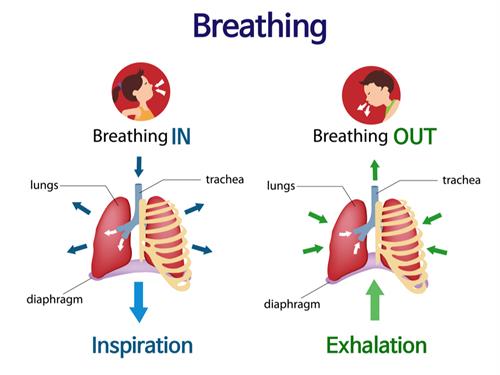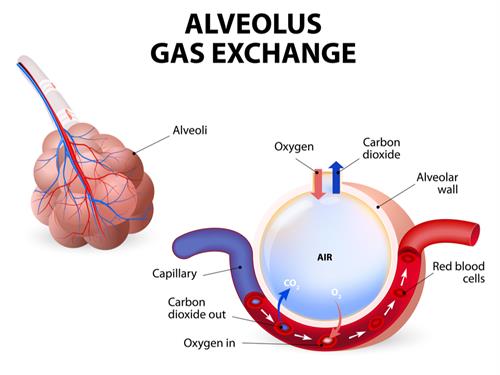
PUMPA - SMART LEARNING
எங்கள் ஆசிரியர்களுடன் 1-ஆன்-1 ஆலோசனை நேரத்தைப் பெறுங்கள். டாப்பர் ஆவதற்கு நாங்கள் பயிற்சி அளிப்போம்
Book Free DemoThe process of inhalation and exhalation:
Lungs are found in the chest cavity, which is surrounded by the ribs. The floor of the chest cavity is formed by a muscular sheet known as the diaphragm, during the process of breathing the diaphragm and the ribcage moves.

At the time of inhalation, the ribs move outwards, and the diaphragm moves downwards to increase the space in our chest cavity. Due to this, the air rushes inside, thereby filling the lungs.

At the time of exhalation, the ribs and the diaphragm are brought back to their original positions, i.e., the ribs move inwards, and the diaphragm moves upwards so that the size of the chest cavity is reduced. Due to this, the air is pushed out of the lungs.
We can feel all these various movements that occur during the process of inhalation and exhalation.
The air we inhale contains a mixture of gases in which\(\ 21% \)of oxygen and\(\ 0.04% \)of carbon dioxide is present. The air we exhale includes \(16.4%\) of oxygen and \(4.4%\) of carbon dioxide.
The air we inhale contains a mixture of gases in which\(\ 21% \)of oxygen and\(\ 0.04% \)of carbon dioxide is present. The air we exhale includes \(16.4%\) of oxygen and \(4.4%\) of carbon dioxide.
Gas exchange in alveoli:
The process of gas exchange is carried by simple diffusion.
The flow of materials (gas, liquid or solid) from a region of higher concentration to low concentration as the oxygen flows from alveoli to blood capillaries (will be learning in the next theory), and carbon dioxide flows from blood capillaries to inside alveoli is known as diffusion.
